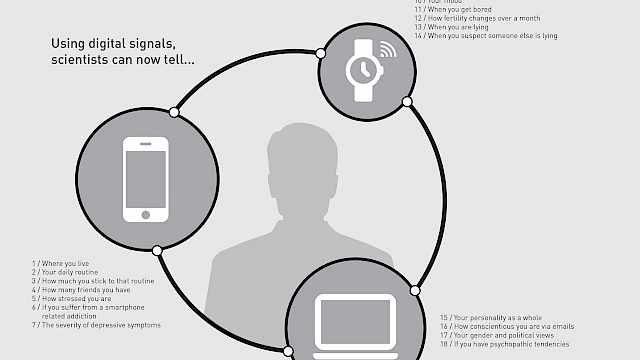Disrupting criminal behaviour is an important endeavour in countering organised crime and terrorism. Tactics to achieve this often focus on resource availability (e.g., seizure of funds, taking down websites), or group dynamics (e.g., removing a leader, affecting communication channels). Questions are often asked about how effective a tactic is in absolute and relative terms, and whether its effectiveness is moderated by other factors. We’ve started to examine these questions within our lab, and repeatedly find that providing misleading information results in the worst group performance.
Disrupting criminal behaviour is an important endeavour in countering organised crime and terrorism.
To mislead a group
When we mislead a group, we provide them with information that directs their attention away from other, possibly more credible, sources. Such irrelevant information (which may manifest as misinformation or disinformation), often leads to mis-framing of a problem as it shapes the ‘narrative hypotheses’ that a group may use to solve a task. This can be especially problematic when it occurs early in task planning as the inclusion of incorrect information becomes embedded into an understanding of a particular problem or solution and results in poor judgements and decision-making, which can continue even after being corrected.
Although we often think about misinformation and/or disinformation when we consider misleading information, we might see it manifested in other ways, such as through tactics to distract. Distraction may eminate within a group through ‘bad apples’. Bad apples freeload and shirk their own effort, or – and of relevance here – they might act to shift the effort of the group away from the task at hand and towards less relevant factors (e.g., intragroup conflict). Thus, the behaviour of bad apples may influence other group members towards aggression, defensiveness, and withdrawal, by disrupting relationships, whilst misleading information disrupts performance.
Which tactic is most effective?
We wanted to understand the effects of false information and distraction on group performance. We formed 79 groups of up to five people to work together online for five weeks to solve a murder mystery. The groups were provided evidence over four weeks to identify the murderer in week five. We intervened in the activity of 48 groups in weeks 2 and 4: half of these groups received misleading information (a piece of evidence pointing towards a non-guilty character) and later a distraction (a set of chat prompts used by a confederate to detract focus away from the evidence and the task at hand), while the other half received the same interventions in reverse. The remaining 31 groups received no intervention.
We found that groups who experienced an intervention were much less likely to solve the task. In particular, those exposed to misleading information early on were more likely to fail at the task than those who we distracted early or those who received no intervention. One reason why misleading information negatively impacted group performance was because it reduced social cohesion. A reduction in social cohesion generally results in group members being less committed to the joint goal, and less willing to be influenced by others or to voice disagreement when making joint decisions. One way that cohesion can manifest – and the way we measured it here – was through language. Cohesive groups tend to communicate equally across all members and in a positive way (e.g., agreement and positive emotion) and show more alignment in their linguistic styles.
Our results showed that linguistic alignment was lowest in those groups that received misleading information, which contrasted with the strong alignment we recorded in groups that were not exposed to an intervention.
Misleading groups is an effective tactic to disrupt criminal behaviour. Misled groups perform tasks less successfully than non-misled groups. However, to successfully mislead groups, disruptions need to occur early on in an interaction. Attempting to mislead groups later in a process is less impactful because the additional time promotes the development of group cohesion, and attention focused more on credible/accurate sources. However, our results suggest that not all disruptions are created equally. Exposure to misleading information appears to be more effective than distraction. Inaccurate information becomes encoded into thinking and the way in which solutions are shaped. It also has a strong impact on social cohesion. One implication of these results is that interventions that significantly reduce social cohesion are likely to be effective in derailing group performance.
Dr Zoey Reeve is a Senior Research Associate at the University of Lancaster, with CREST.
Read more
Felps, W., Mitchell, T, R., & Byington, E. (2006) How, When, and Why Bad Apples Spoil the Barrel: Negative Group Members and Dysfunctional Groups. Research in Organisational Behaviour, 27: 175-222. https://doi.org/10.1016/S0191-3085(06)27005-9
Gonzales, A. L., Hancock, J. T., & Pennebaker, J, W. (2010) Language Style Matching as a Predictor of Social Dynamics in Small Groups. Communication Research, 37(1): 3-19. https://doi.org/10.1177/0093650209351468
Ormerod, T., Barrett, E., & Taylor, P. (2012) Investigative sense-making in criminal contexts. Proceedings of the Seventh International NDM Conference (Ed. J.M.C Schraagen), Amsterdam, The Netherlands. https://ris.utwente.nl/ws/portalfiles/portal/211824698/Investigative_sense_making_in_criminal_contexts.pdf
Copyright Information
p.13: © Andrey Popov | stock.adobe.com







